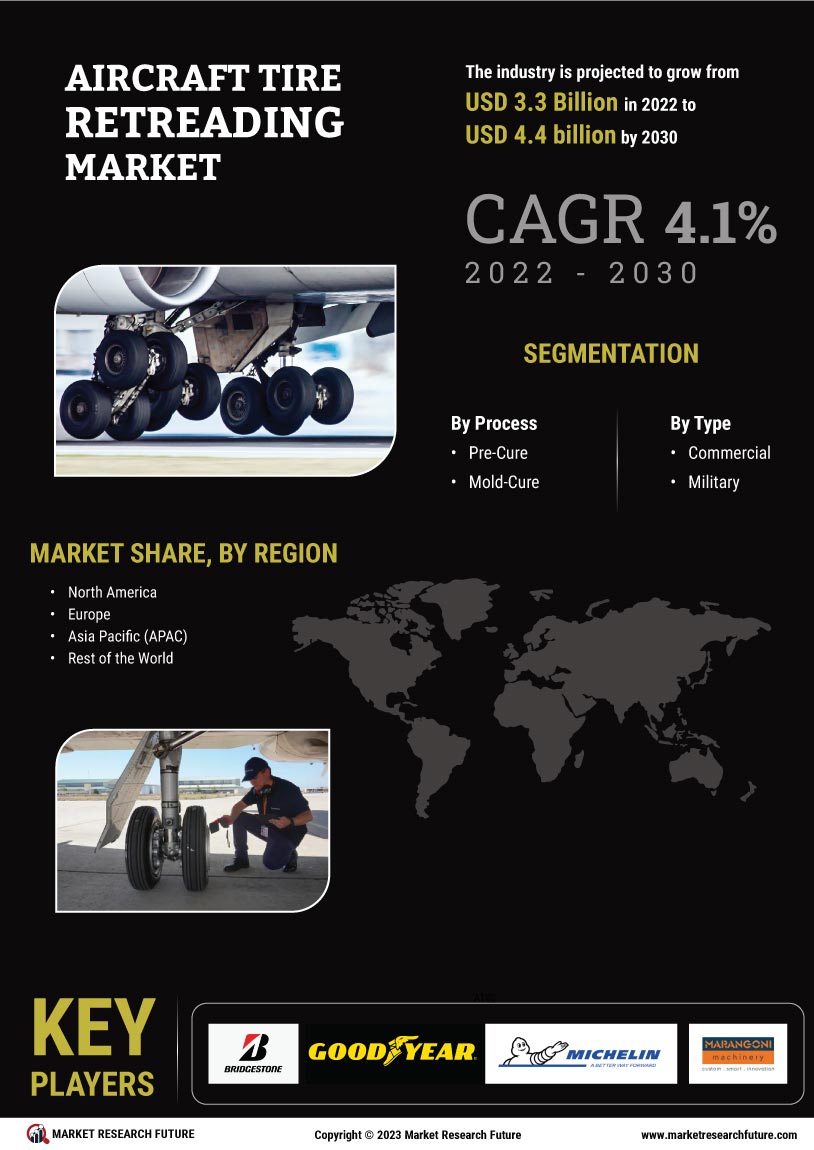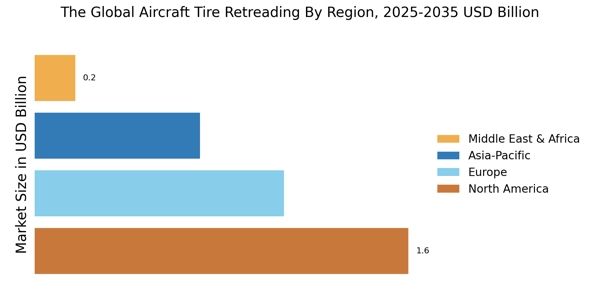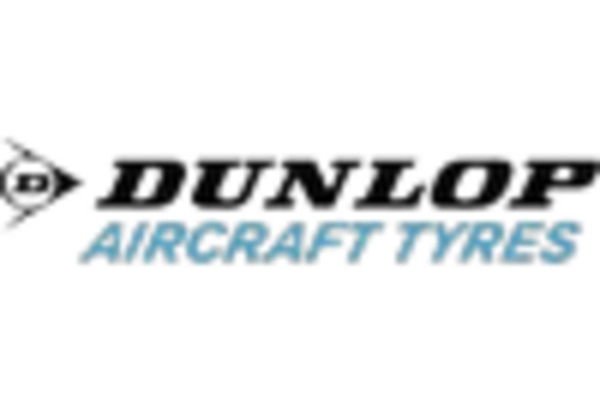Cost Efficiency
Cost efficiency remains a pivotal driver in the Aircraft Tire Retreading Market. Retreading tires significantly reduces the overall expenditure associated with aircraft operations. The cost of retreading is typically 30 to 50% lower than purchasing new tires, which is particularly appealing to airlines facing tight profit margins. As airlines seek to optimize operational costs, the demand for retreaded tires is likely to increase. Furthermore, the retreading process extends the life of tires, allowing airlines to maximize their investments. This financial incentive is compounded by the growing trend of fleet modernization, where airlines are looking to balance performance with cost. Thus, the cost efficiency associated with retreading is a crucial factor influencing the market dynamics.
Regulatory Support
Regulatory support plays a significant role in shaping the Aircraft Tire Retreading Market. Various aviation authorities have established guidelines and standards that promote the use of retreaded tires, recognizing their safety and performance capabilities. These regulations often encourage airlines to adopt retreading as a sustainable practice, aligning with broader environmental goals. For instance, some regions have implemented incentives for airlines that utilize retreaded tires, further stimulating market demand. The presence of a supportive regulatory framework not only enhances consumer confidence in retreaded products but also fosters innovation within the industry. As regulations evolve, they are likely to create a more favorable environment for the growth of the retreading market.
Technological Innovations
Technological innovations are a driving force in the Aircraft Tire Retreading Market. Advances in materials science and retreading techniques have improved the quality and performance of retreaded tires. Enhanced bonding agents and tread designs have led to retreaded tires that can match or even exceed the performance of new tires. This evolution is crucial as airlines prioritize safety and reliability. Furthermore, the integration of data analytics and monitoring systems allows for better assessment of tire conditions, optimizing the retreading process. As these technologies continue to evolve, they are likely to attract more airlines to consider retreading as a viable option, thereby expanding the market. The ongoing research and development in this field suggest a promising future for the industry.
Market Demand from Airlines
Market demand from airlines is a crucial driver in the Aircraft Tire Retreading Market. As the global aviation sector continues to expand, airlines are increasingly seeking cost-effective solutions to manage their operational expenses. The rising number of flights and the growing fleet size necessitate a steady supply of tires, making retreading an attractive option. Airlines are recognizing that retreaded tires can provide comparable performance to new tires at a fraction of the cost. This demand is further fueled by the need for airlines to maintain high safety standards while managing budgets. Consequently, the increasing reliance on retreaded tires is expected to bolster the market, as airlines prioritize both economic and operational efficiency.
Environmental Considerations
Environmental considerations are increasingly shaping the Aircraft Tire Retreading Market. The aviation sector is under pressure to reduce its carbon footprint, and retreading tires presents a viable solution. By opting for retreaded tires, airlines can significantly decrease waste, as retreading utilizes existing tire casings rather than producing new ones. This process conserves resources and minimizes landfill contributions. According to industry estimates, retreading can save up to 70% of the raw materials required for new tire production. As sustainability becomes a core value for many airlines, the environmental benefits of retreading are likely to drive market growth. The alignment of retreading practices with corporate social responsibility initiatives further enhances its appeal in the aviation industry.


















Leave a Comment